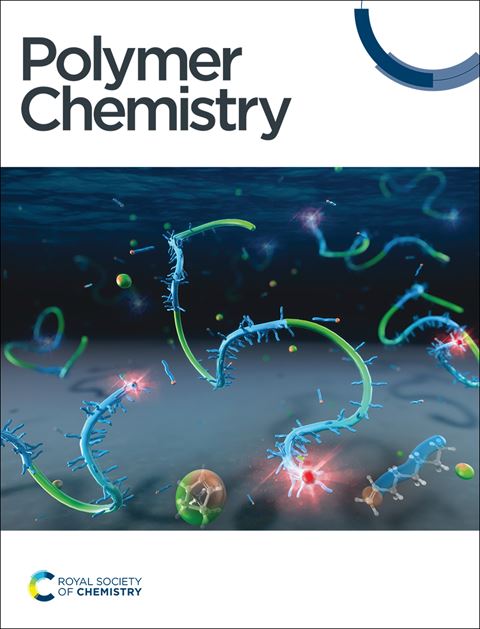Triblock architecture and PEG hydrophilic blocks enable efficient thermogelation of poly(2-phenyl-2-oxazine)-based worm-gels†
IF 4.1
2区 化学
Q2 POLYMER SCIENCE
引用次数: 0
Abstract
Previously, the cooling-induced thermogelation of an amphiphilic ABA type triblock copolymer comprising a central poly(2-phenyl-2-oxazine) (pPheOzi) block flanked by hydrophilic poly(2-methyl-2-oxazoline) (pMeOx) blocks was reported. This process is based on an unusual, cooling-induced transition in polymer self-assembly from spherical to worm-like micelles, for which the PheOzi units are decisive. Here, we investigate this phenomenon further by introducing new variants of amphiphilic pPheOzi-based copolymers to explore the variability of the system. Changing the arrangement of the MeOx and PheOzi constitutional repeat units enables investigation of the influence of the polymer architecture on the thermogelation. We found that a triblock architecture is superior to diblock, gradient and star-like polymer architectures in terms of efficient order–order transition-based thermogelation. In addition, a coupling procedure based on copper-catalyzed azide–alkyne cycloaddition is presented that allows for a direct comparison of pMeOx and PEG as hydrophilic blocks in pPheOzi-based triblocks. Interestingly, PEG hydrophilic blocks also enable rapid worm-formation and show faster gelation as well as increased gel strength. Altogether, our findings provide basic design criteria for improved (pPheOzi-based) worm-gels. The introduced small library of pPheOzi-based copolymer variants can be used for further fundamental studies regarding thermo-responsive transitions in polymer self-assembly.

求助全文
约1分钟内获得全文
求助全文
来源期刊

Polymer Chemistry
POLYMER SCIENCE-
CiteScore
8.60
自引率
8.70%
发文量
535
审稿时长
1.7 months
期刊介绍:
Polymer Chemistry welcomes submissions in all areas of polymer science that have a strong focus on macromolecular chemistry. Manuscripts may cover a broad range of fields, yet no direct application focus is required.
 求助内容:
求助内容: 应助结果提醒方式:
应助结果提醒方式:


